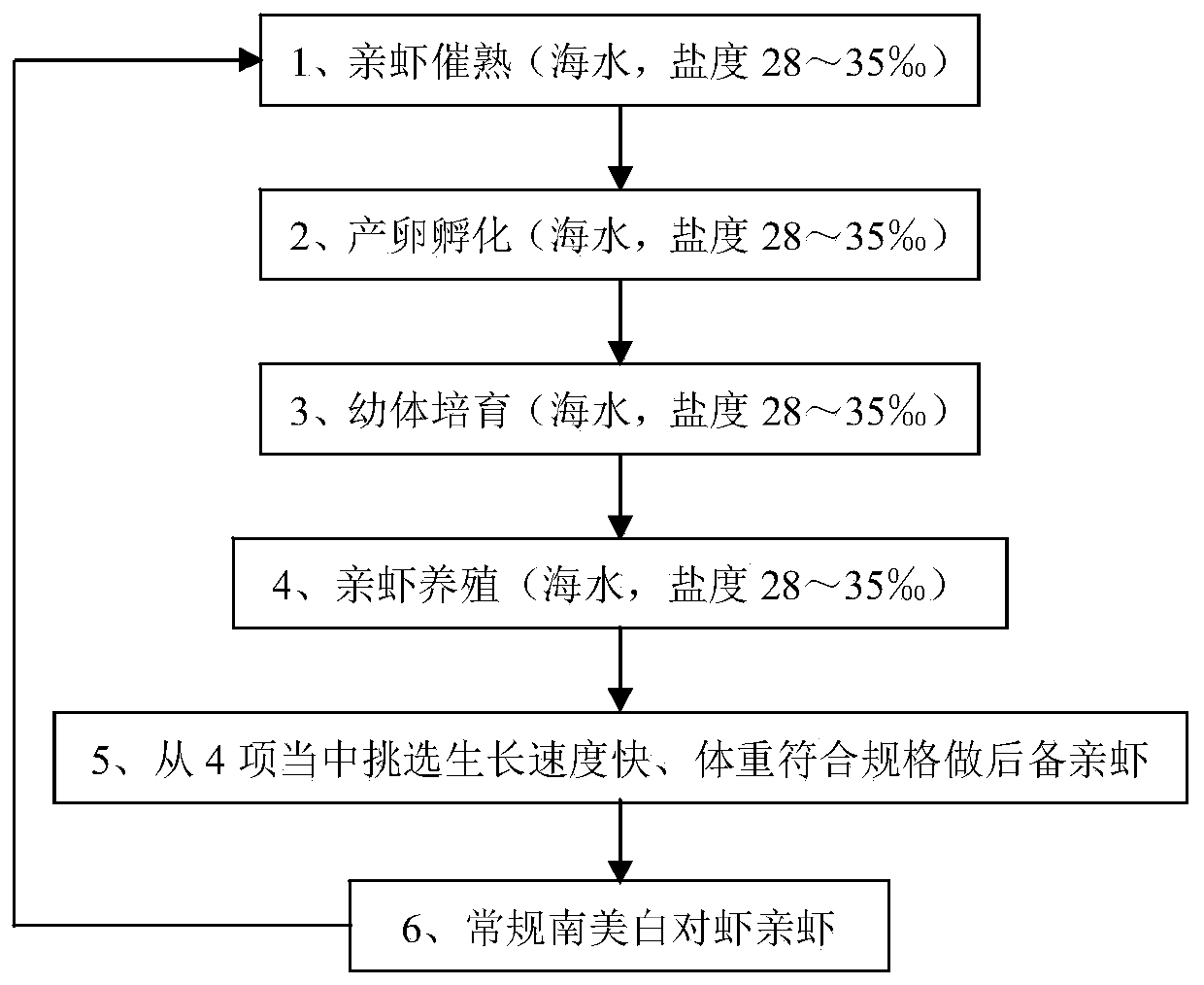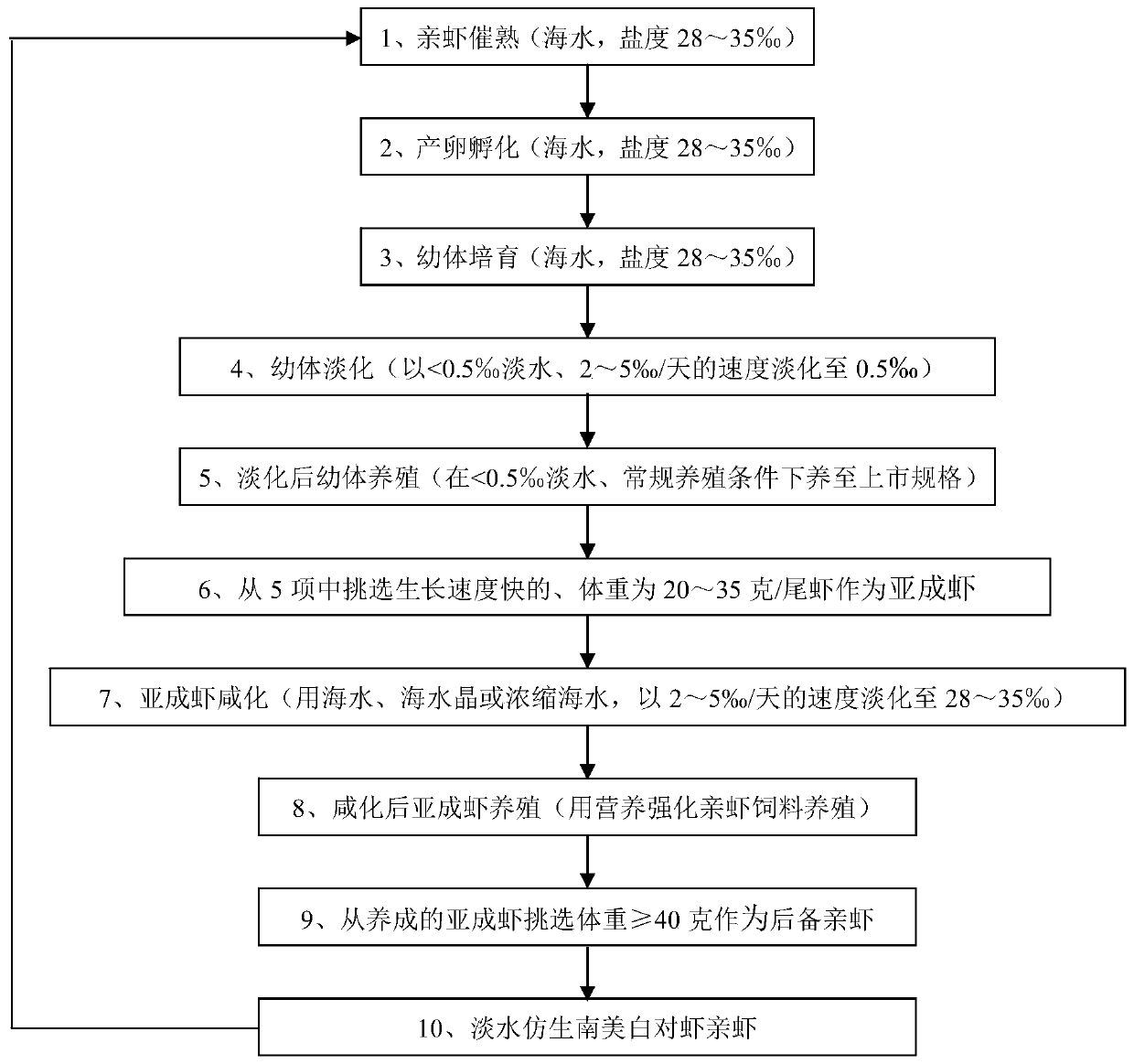Breeding method for bionic freshwater South American parent white shrimps
A white prawn and freshwater technology, applied in fish farming, application, climate change adaptation, etc., can solve the problems of inability, high cost of breeding, and pollution of the breeding environment by seawater, etc., and achieve strong stress resistance, fast growth, and reproduction The effect of good ability
- Summary
- Abstract
- Description
- Claims
- Application Information
AI Technical Summary
Problems solved by technology
Method used
Image
Examples
Embodiment 1
[0031] A kind of bionic freshwater Penaeus vannamei broodstock breeding method (factory culture breeding), its breeding process is as follows figure 2 shown, including the following steps:
[0032] 1. Broodstock hatching.
[0033] With a salinity of 28-35‰, non-polluting clean natural or semi-natural seawater (natural seawater plus artificial sea crystals) after sedimentation, sand filtration, and disinfection are used as aquaculture water.
[0034] The broodstock shrimps are ripened in the above-mentioned seawater, and then eggs are laid and hatched to obtain larvae, ie shrimp seedlings.
[0035] Second, the larvae desalination.
[0036] After the larvae are cultivated, clean surface water or groundwater with a salinity of less than 0.5‰ and no seawater pollution is selected as desalination water.
[0037] Add the desalinated water into the aquaculture water body, and gradually desalinate the larvae aquaculture water body at a desalination rate of 2-5‰ / day until the salin...
Embodiment 2
[0050] A kind of bionic freshwater Penaeus vannamei broodstock breeding method (pond culture breeding), its breeding process is as follows figure 2 shown, including the following steps:
[0051] 1. Broodstock hatching.
[0052] With a salinity of 28-35‰, non-polluting clean natural or semi-natural seawater (natural seawater plus artificial sea crystals) after sedimentation, sand filtration, and disinfection are used as aquaculture water.
[0053] The broodstock shrimps are ripened in the above-mentioned seawater, and then eggs are laid and hatched to obtain larvae.
[0054] Second, the larvae desalination.
[0055] After the larvae are cultivated, clean surface water or groundwater with a salinity of less than 0.5‰ and no seawater pollution is selected as desalination water.
[0056] Add the desalinated water into the aquaculture water body, and gradually desalinate the larvae aquaculture water body at a desalination rate of 2-5‰ / day until the salinity end point of the water...
PUM
 Login to View More
Login to View More Abstract
Description
Claims
Application Information
 Login to View More
Login to View More - R&D
- Intellectual Property
- Life Sciences
- Materials
- Tech Scout
- Unparalleled Data Quality
- Higher Quality Content
- 60% Fewer Hallucinations
Browse by: Latest US Patents, China's latest patents, Technical Efficacy Thesaurus, Application Domain, Technology Topic, Popular Technical Reports.
© 2025 PatSnap. All rights reserved.Legal|Privacy policy|Modern Slavery Act Transparency Statement|Sitemap|About US| Contact US: help@patsnap.com


